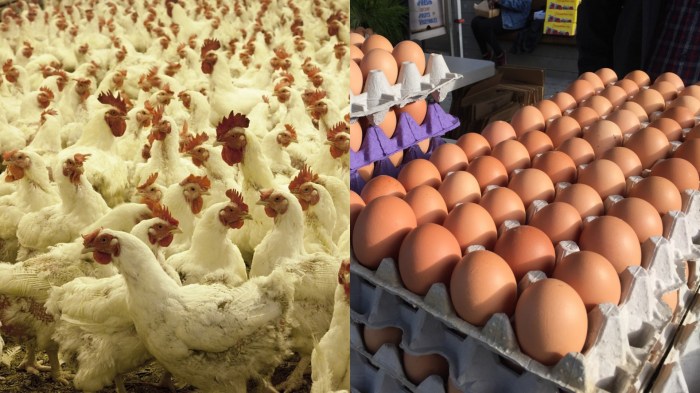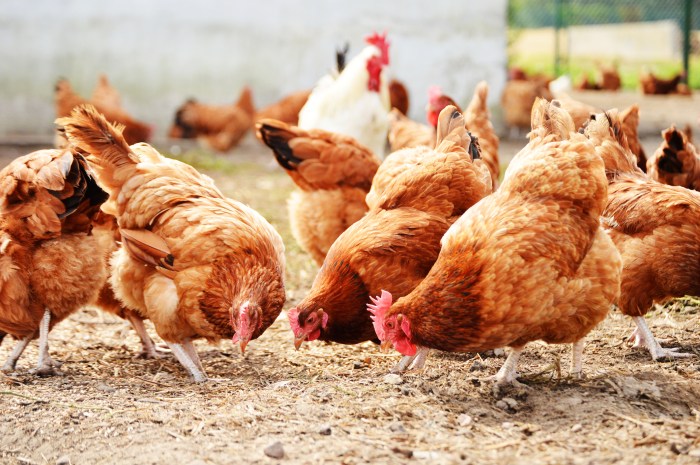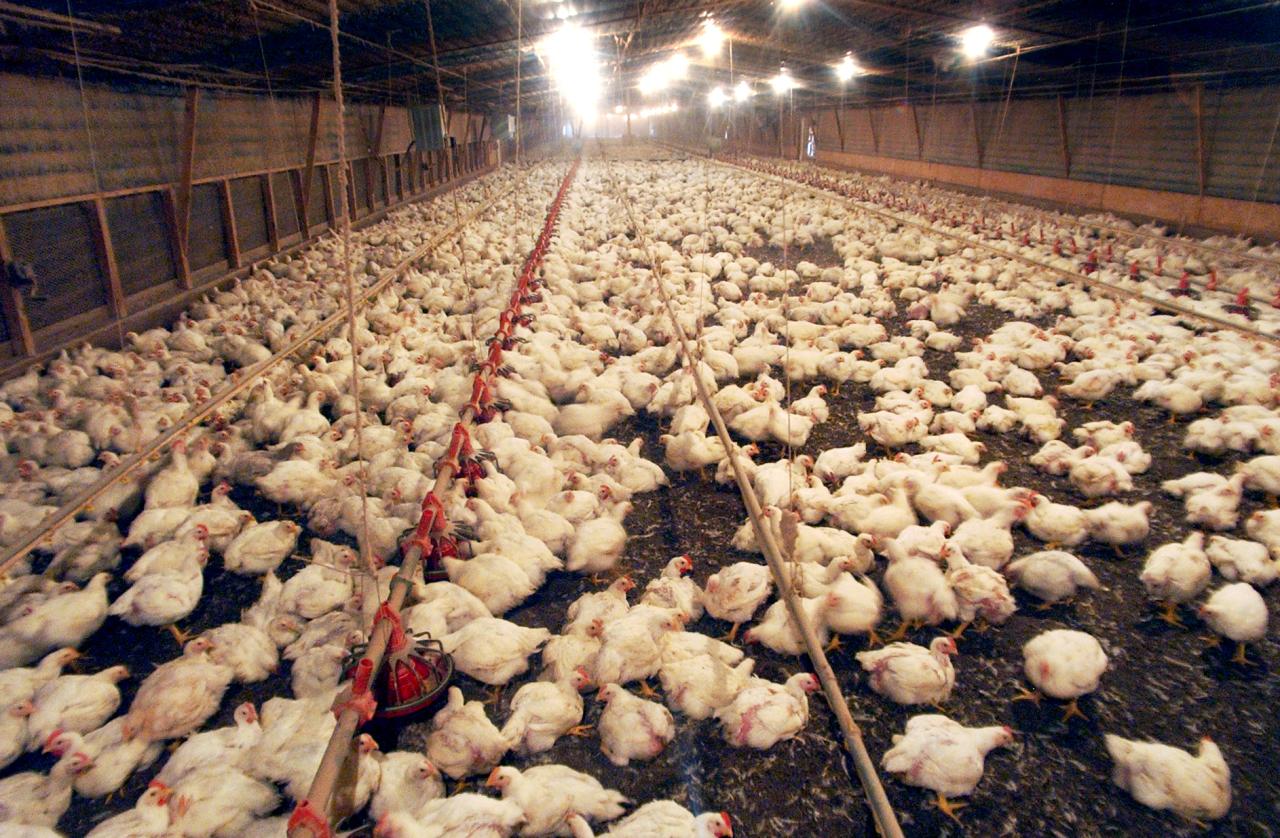If a chicken farm sold 3 000 – If a chicken farm sold 3,000 chickens, it could potentially generate significant revenue. However, the exact amount of revenue would depend on several factors, including the market value of chickens and the costs associated with raising and selling them. This article will delve into the potential revenue and costs involved in selling 3,000 chickens, providing insights into the market demand, sales strategies, distribution logistics, sustainability, workforce management, financial projections, risk management, and opportunities for growth and expansion.
Understanding the complexities of this scenario will empower chicken farmers and industry stakeholders to make informed decisions, optimize their operations, and maximize their profitability.
Farm Revenue

The sale of 3,000 chickens has the potential to generate significant revenue for the chicken farm. The market value of chickens fluctuates based on factors such as breed, weight, and demand, but on average, chickens can be sold for a price ranging from $5 to $10 per pound.
Revenue Calculation
To estimate the potential revenue, we need to consider the average weight of the chickens and the market price per pound. Let’s assume that the average weight of each chicken is 5 pounds and the market price is $7 per pound.
- Total weight of 3,000 chickens: 3,000 x 5 pounds = 15,000 pounds
- Potential revenue: 15,000 pounds x $7 per pound = $105,000
Therefore, the chicken farm could potentially generate approximately $105,000 from the sale of 3,000 chickens.
Production Costs

Raising and selling chickens involves substantial expenses, including feed, labor, and operational costs. Understanding these costs is crucial for profitability.
Feed costs are a significant expense, as chickens require a balanced diet to grow and produce eggs. Labor expenses include salaries and benefits for staff involved in feeding, cleaning, and maintaining the chickens’ health. Other operational expenses include electricity, water, veterinary care, and equipment maintenance.
Feed Costs
- Chickens require a specific feed mix containing essential nutrients, vitamins, and minerals.
- The cost of feed varies depending on the type of feed, quality, and market conditions.
- Feed costs typically account for 60-70% of total production costs.
Labor Expenses
- Labor costs include salaries, benefits, and overtime pay for staff involved in chicken care.
- Staff responsibilities include feeding, cleaning, monitoring health, and maintaining the farm.
- Labor expenses can vary depending on the size of the farm and the level of automation.
Other Operational Expenses
- Electricity costs for lighting, ventilation, and temperature control.
- Water costs for drinking and cleaning.
- Veterinary care for vaccinations, disease prevention, and treatment.
- Equipment maintenance for feeders, waterers, and other equipment.
- Other expenses may include bedding, litter, and transportation costs.
Market Demand
The demand for chicken products in the relevant market is driven by several factors, including consumer preferences, market trends, and competition. Understanding these factors is crucial for optimizing production and marketing strategies.
Consumer preferences play a significant role in shaping demand. Factors such as taste, health concerns, convenience, and price influence consumer choices. Market trends, such as the growing popularity of organic and antibiotic-free chicken, also impact demand.
Consumer Preferences
- Taste: Consumers prefer chicken products that are flavorful and juicy.
- Health Concerns: Consumers are increasingly health-conscious and seek out chicken products that are low in fat and cholesterol.
- Convenience: Consumers value convenience and often opt for pre-cooked or easy-to-prepare chicken products.
- Price: Price is a key factor in consumer decisions, with many consumers seeking affordable chicken products.
Sales Strategies
To effectively sell 3,000 chickens, a comprehensive sales strategy is crucial. This involves identifying suitable sales channels, implementing appropriate pricing models, and employing effective promotional tactics.
Sales Channels
Exploring diverse sales channels ensures a wider reach for potential customers. Consider the following options:
- Wholesale Distributors:Partnering with wholesale distributors provides access to a large network of retailers and restaurants.
- Online Marketplaces:Platforms like Amazon and Etsy offer a convenient way to reach online consumers.
- Farmers’ Markets:Local farmers’ markets allow for direct interaction with customers and community engagement.
- Grocery Stores:Establishing relationships with grocery stores can secure shelf space for your products.
Pricing Models
Determining the optimal pricing strategy is essential for profitability. Consider the following models:
- Cost-Plus Pricing:Calculating the total cost of production and adding a desired profit margin.
- Value-Based Pricing:Setting prices based on the perceived value of the product to customers.
- Competitive Pricing:Analyzing market prices and setting prices within a competitive range.
Promotional Tactics
Effective promotion can drive sales and increase brand visibility. Implement the following tactics:
- Social Media Marketing:Utilize platforms like Facebook and Instagram to engage with potential customers.
- Email Marketing:Build an email list and send targeted campaigns promoting your products.
- Content Marketing:Create valuable content such as recipes and cooking tips to educate and attract customers.
- Public Relations:Generate positive media coverage to enhance brand credibility.
Distribution Logistics

The efficient distribution of 3,000 chickens requires careful planning to ensure timely and cost-effective delivery to customers. This involves determining the most suitable transportation methods, packaging requirements, and storage facilities to maintain the quality and freshness of the products.
Transportation Methods
Selecting the appropriate transportation method depends on the distance, quantity, and delivery time. For short distances, refrigerated trucks are ideal for maintaining product temperature. For longer distances, specialized refrigerated containers on trains or ships may be necessary. Additionally, smaller vehicles, such as refrigerated vans, can be used for local deliveries.
Packaging Requirements
Proper packaging is crucial to protect the chickens during transportation and storage. Durable and breathable containers that provide adequate ventilation are essential. The packaging should be designed to prevent damage, contamination, and moisture accumulation. Additionally, clear labeling and temperature indicators can facilitate tracking and ensure proper handling.
Storage Facilities
Adequate storage facilities are required to maintain the quality of the chickens before distribution. Refrigerated warehouses or cold storage units are necessary to control temperature and prevent spoilage. These facilities should be equipped with temperature monitoring systems and regular maintenance to ensure optimal conditions.
Sustainability and Environmental Impact
Raising and selling 3,000 chickens can have a significant environmental impact. Poultry farming requires large amounts of land, water, and feed, which can contribute to deforestation, water pollution, and greenhouse gas emissions.Sustainable farming practices can minimize these impacts. For example, using efficient feed conversion technologies and implementing proper waste management strategies can reduce the environmental footprint of chicken farming.
If a chicken farm sold 3,000 eggs, that’s a lot of omelets! Speaking of long things, did you know that the longest river in Costa Rica is the longest river in costa rica ? It stretches for over 200 miles, providing water to the country’s lush rainforests and teeming wildlife.
Now, back to those 3,000 eggs – that’s a lot of breakfast sandwiches!
Waste Management
Chicken farming generates significant amounts of manure, which can pollute water sources if not managed properly. Composting or anaerobic digestion can convert manure into a valuable fertilizer, reducing waste and environmental pollution.
Workforce Management
Effective workforce management is essential to manage the production and sale of 3,000 chickens. This involves organizing a team of skilled individuals with specific job roles and responsibilities.
Job Roles and Responsibilities
The key job roles within the workforce include:
- Production Manager:Oversees the entire production process, ensuring efficient operations and meeting production targets.
- Chicken Caretakers:Responsible for the daily care of chickens, including feeding, watering, and maintaining a clean and healthy environment.
- Sales Manager:Develops and executes sales strategies, manages customer relationships, and monitors market demand.
- Distribution Manager:Coordinates the logistics of chicken distribution, ensuring timely and efficient delivery to customers.
- Sustainability Officer:Implements and monitors sustainability practices, minimizing environmental impact and ensuring ethical operations.
Training Requirements
Each job role requires specific training to ensure competence and efficiency. Training programs should cover:
- Chicken care and handling techniques
- Sales and marketing strategies
- Distribution logistics and transportation
- Sustainability principles and practices
- Health and safety regulations
Financial Projections

The financial projections for the sale of 3,000 chickens aim to estimate the potential revenue, expenses, and profit margins of this operation. These projections are crucial for decision-making and ensuring the financial viability of the chicken farm.
The revenue generated from the sale of 3,000 chickens is estimated based on market demand, sales strategies, and distribution logistics. The expenses associated with production include feed, labor, utilities, and veterinary care. By considering these factors, we can forecast the potential profitability of this venture.
Revenue Estimation, If a chicken farm sold 3 000
The revenue estimation is based on the number of chickens sold, the market price per chicken, and the sales volume. The market price is influenced by factors such as supply and demand, seasonality, and competition. The sales volume is determined by the effectiveness of sales strategies and distribution channels.
- Number of chickens sold: 3,000
- Market price per chicken: $10
- Estimated revenue: $30,000
Expense Estimation
The expense estimation includes fixed costs, such as rent or mortgage payments, and variable costs, which fluctuate with production levels. Variable costs include feed, labor, utilities, and veterinary care.
- Fixed costs: $5,000
- Variable costs: $15,000
- Estimated total expenses: $20,000
Profit Margin Estimation
The profit margin is calculated by subtracting the total expenses from the estimated revenue. A positive profit margin indicates profitability, while a negative profit margin suggests a loss.
Profit Margin = (Estimated Revenue
Estimated Total Expenses) / Estimated Revenue
- Profit Margin = ($30,000 – $20,000) / $30,000
- Profit Margin = 33.33%
Risk Management: If A Chicken Farm Sold 3 000
To ensure the success of our chicken farm, we must consider potential risks associated with selling 3,000 chickens. By identifying and mitigating these risks, we can maintain business continuity and minimize losses.
One significant risk is disease outbreaks. To mitigate this, we will implement strict biosecurity measures, including regular vaccinations, quarantine procedures, and thorough sanitation practices. Additionally, we will establish relationships with veterinarians to provide prompt diagnosis and treatment in the event of an outbreak.
Market Fluctuations
Another risk is market fluctuations. Changes in consumer demand, supply chain disruptions, or economic downturns can impact chicken prices. To address this, we will diversify our customer base, explore new markets, and maintain flexible production capacity to adjust to changing market conditions.
Competition
Competition from other chicken farms can also pose a risk. To stay competitive, we will focus on producing high-quality chickens, differentiating our products through unique features, and establishing a strong brand reputation.
Natural Disasters
Natural disasters, such as hurricanes or floods, can disrupt our operations. To mitigate this, we will develop contingency plans, secure insurance coverage, and establish partnerships with suppliers to ensure a continuous supply of feed and other essential resources.
Operational Inefficiencies
Operational inefficiencies can lead to increased costs and reduced profitability. We will invest in automation, streamline processes, and continuously monitor performance metrics to identify and address areas for improvement.
Growth and Expansion

After successfully selling 3,000 chickens, the farm can explore various avenues for growth and expansion to increase revenue and profitability.
One strategy is to expand into new markets. This could involve targeting different geographical areas, such as neighboring cities or regions with a higher demand for chicken products. Alternatively, the farm could explore selling to different types of customers, such as restaurants, hotels, or catering companies.
Product Diversification
Another opportunity for growth is to diversify the product line. This could involve offering different cuts of chicken, such as breasts, thighs, or wings. Additionally, the farm could consider value-added products, such as marinated or seasoned chicken, or even prepared chicken dishes.
Value-Added Services
In addition to expanding product offerings, the farm could also explore value-added services. This could include offering delivery or pickup services, providing cooking tips or recipes, or partnering with local chefs to host cooking classes or events.
Key Questions Answered
What is the average market value of a chicken?
The average market value of a chicken varies depending on factors such as breed, weight, and market conditions. Generally, it can range from $0.50 to $2.00 per pound.
What are the major costs associated with raising and selling chickens?
The major costs associated with raising and selling chickens include feed, labor, housing, veterinary care, and marketing.
How can chicken farmers increase their revenue?
Chicken farmers can increase their revenue by optimizing production efficiency, exploring value-added products, and diversifying their customer base.